Epiphany chalk: the fascination of Catholic devotions

Here is a door from Bamberg marked in the year 2007
I’m re-posting this post from Bridges and Tangents (written three years ago when I was working at the seminary) in case anyone wants to do the chalk-thing for the Epiphany this weekend:
Catholic devotions are fantastic! Last night, after Exposition of the Blessed Sacrament and Night Prayer, we processed to the lobby by the front door of the seminary to bless the Epiphany Chalk. Then the Rector took the Holy Chalk, stood on the Holy Step-Ladder, and wrote on the Holy Lintel of the Holy Front Door.
OK, I’m getting carried away with the step-ladder, and I know how easily this could all sound a bit mad, or superstitious. But when you realise that it is about faith – that blessings and chalk and inscriptions above doorways can be an outward expression of faith in Christ, and in his power to work in this world and to work through the intercession of his saints – then it makes eminent sense.
Chalk, in itself, doesn’t have any power; but blessed chalk, through our faith in Christ, and in the blessing he gives through his ministers, can be a means for our hearts to be more open to him and our homes to be kept under his protection.
Here is the explanation we were given last night:
The Solemnity of the Lord’s Epiphany is associated with many traditions of popular piety. One such is the blessing of homes, through the intercession of the three wise men, using blessed chalk.
An inscription is made above the front door to entrust the home to God’s protection for the new year and ensure all who enter or leave may enjoy God’s blessing. It looks like this:
20 + C + M + B + 12
The number designates the new year, while the ‘CMB’ stands for the traditional names of the wise men – Caspar, Melchior and Balthasar – and also the prayer Christus mansionem benedicat which means ‘May Christ bless this dwelling’.
This blessing is common especially in Central Europe and is often accompanied by processions of children and their parents.
[Cf. Directory on Popular Piety and the Liturgy, 118]
Often broken pieces of chalk are blessed at the end of the Epiphany Mass, using the traditional formula found in the Rituale:
O Lord God, bless this chalk that it may be used for the salvation of the human race.
Through the invocation of Thy most Holy Name, grant that whoever shall take of this chalk and write with it upon the doors of his house the names of Thy saints, Caspar, Melchior and Balthasar, may through their merits and intercession receive health of body and protection of soul. Through Christ our Lord. Amen.
The problem, when I got to my own room and made the inscription, was that the door-frame and the walls are all white. Oh well, it’s there for the angels to see.
Tags: CMB, Epiphany chalk, Three Wise Men
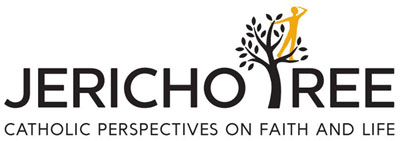



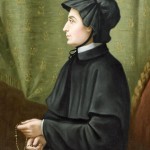

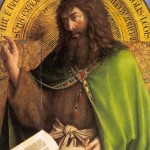
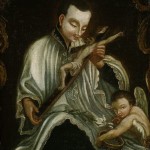
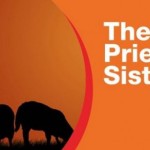







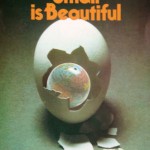
Hello Father Wang.
What does the last digit stand for in the inscription?
Thanks for the article, far more hands on than a house blessing card.
Regards.
James
Hi James – it is the year 2015 split up with the letter, so 2015 makes 20+CMB+15